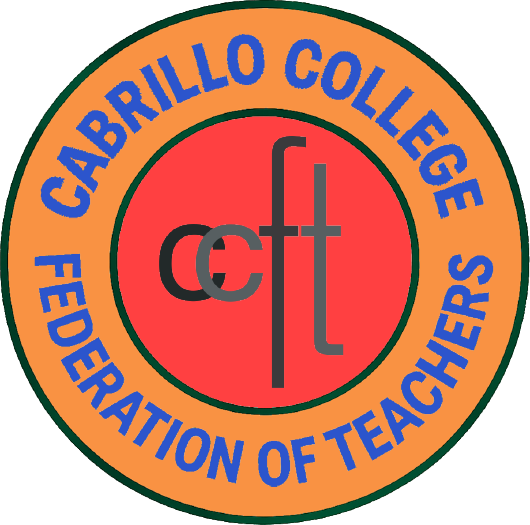
by Kristin J. Wilson, Anthropology Department
Like Melville’s Bartleby the Scrivener, when it comes to grading, I would prefer not to.
Why is grading tedious, and more to the point, so emotionally exhausting? For me, it’s reading the same answers over and over, encountering the apparent lack of effort by many students, making infinite micro-decisions about rubric conformity, and sinking into disappointment in discovering students missed key points which could only mean I’ve utterly failed as a teacher. And nothing makes me regret my entire career like encountering blatant plagiarism in the middle of a stack of papers through which I’d been slogging. Students turn in stolen work for no other reason than to get that grade.
When I first started teaching 28 years ago, I thought it would be fun to weigh in on students’ progress, to make suggestions here and there to guide them along the path to achievement. I knew I would be much fairer than my own professors.
I wouldn’t be like Dr. S, who, brought out of retirement to teach linguistics one last time insisted on a tradition of granting only one A per class. (Not above grade-grubbing, I cajoled him into making an exception for me. He said he was too tired to keep arguing.) I’d never insult a student like Dr. R, the geology professor I’d wanted to impress. This man confessed he’d already sent in my A when I arrived, breathless, at his office door, to hand in my final paper just under the deadline. It was obvious he never intended to read “Gold, My Favorite Mineral,” a masterpiece I’d stayed up all night writing.
Like many long-time instructors, I’ve given in to the grade grubbers and skipped the chore of reading the second draft of a top student’s paper at the end of the term. I’ve curved grades to minimize complaints and make up for any imperfections in my exams. Other strategies toward grading ease for me and equity for students include low-stakes assignments, frequent assessments, fewer assessments, late penalties, no late penalties, individualized assignments, group grades, peer evaluation, contract grading, and the list goes on.
None of this has much if anything to do with the fantasy of college classes as places for lively debate, novel ideas, and transformative learning. I never attended or taught at UCSC but I long admired the narrative evaluations as more authentic than what I was doing, running multiple choice forms through the machine. But I knew narrative evaluations would never work for me at Cabrillo. It wasn’t unusual to have 250 students in a semester. I could never provide thorough written feedback to that many students.
The pandemic helped along a cultural shift toward treating students and one another more humanely, stoking more conversations about grading equity. Our students are burdened with life demands unfamiliar to those living inside the ivy walls when grading was invented at Yale in 1785. Now is a great time to re-think what we value about teaching as a vocation versus pushing papers—or click, click, clicking through them until our hands cramp into claws. Like most instructors I know, I’ve often waxed utopian, asking “What if grades didn’t matter?” So, motivated by despair, I tried ungrading and here’s what happened:
The Good: It’s all about the feedback.
- I quickly learned I could tailor course material to individual students. For example, I sent study aids to students who told me in their early self-evaluations that they were struggling with vocabulary or other basic skills and I recommended they skip certain assignments. I posed “challenges” to those breezing through the material to delve deeper by accessing supplemental resources or by producing more challenging and creative work.
- My role became more that of a guide than an authority figure. As a result students relayed more about their lives and their challenges and successes with the course.
- Peer engagement in discussions was at an all-time high. Students told me it was because they felt more comfortable taking risks and making mistakes when they weren’t graded.
- I provided only meaningful feedback, focusing on the harder questions. Students were invited to tell me when they’d like even more feedback. Some wanted detail and others asked for a mere “thumbs up.” Some of those who wanted more feedback came to office hours which went way past the allotted time. I barely noticed because we were talking about my favorite subjects!
- I scanned all posts and provided selective comments. I communicated with each student and used the roster to keep track. I sent personal emails or video messages to each student three times/semester. These missives ranged from “keep up the good work,” to “looks like you need help,” to “where’ve you been?” It takes a few hours to send these and a few more hours of work to respond to their responses so I spaced them out by course section. Students really appreciated these!
- Video evaluations were a joy to watch. Each student’s unique reflection on the course material showed me where they were in their learning and I could push or support them accordingly. They were able to choose five from a list of 10 reflection questions and, to my delight, most students selected the more involved options.
- The majority of my conversations with students were about course concepts, not grades. Students didn’t ask what they got wrong or how to study better; they asked about anthropology.
- The time commitment was similar to that of graded classes and the time spent was much more gratifying.
What did students say?
I’m not sure what college student would object to ungrading. I LOVE this concept so much. I never had a professor do this and I appreciated it so much. It made my class experience anxiety-free. I was able to complete assignments with no panic, and I was able to enjoy the curriculum. It was an extremely enjoyable experience thanks to this wonderful mindset. Thank you!
I love ungrading. It may sound weird but it is nice to give myself a final self evaluation that I think I deserve. Especially when given this much respect when handing out a final grade, it makes you really want to earn it, which I feel that I did through my own actions throughout the entire semester.
I really like the concept of ungrading. I felt this class was very human in the way It operated, especially for an online course. I liked how I could keep you up to date on how I was doing in the class and what was going on in my own life. The element of being tasked with giving myself a grade made me really want to earn it, I didn’t want to lie to you or myself. This is a great way to run a class, I hope more teachers adopt your style of education. It’s very effective. Though I had many trials and tribulations during this course, it will definitely go down as one of my favorite classes.
I think I like ungrading. It is different from the usual which is why I was hesitant about it at first. I am one of those people who struggles with academic validation and I tend to seek it when I’m doing work. Being exposed to an ungrading way of learning made me realize that I haven’t been learning for myself. I can see the pros and cons of this way of grading but for me it was a positive experience.
The Bad—It takes some getting used to.
- Students needed plenty of reassurance that ungrading was not a trick. This required many emails and reminders, mostly at the beginning of the semester.
- Canvas is tricky to use for ungrading. I like to use the “speed grading” feature to read/view student submissions but some assignment types give points by default. Some students thought this irrelevant number reflected their progress in the class.
- Flexible due dates were important but demotivated some students accustomed to working only under time pressure. Personal check-ins helped mitigate this problem but plenty of students found the work piling up. I ended up suggesting they cut out some assignments and focus on doing quality work over hastily checking off each assignment. Students used to attempt quizzes without doing the reading. I could tell the ungraded students to do the reading without the quiz if they were short on time.
What did students say?
Not a big fan of grading yourself. The reason being that you have to be objective, and I don’t believe that I can. that i always going to be a little biased towards myself, especially when grading my own work. You need a person, who is objective, to the whole, but at the same time, be abler to explain why you got that grade on a test or assignment.
Ungrading is interesting to say the least. I enjoy being able to relax about not constantly looking at my grade out of pure impulse. But at the same time, it’s good see how you’re doing to see if you could possibly improve methods. I think it would be nice to have a mid semester standing of some sort to have students see their progress. Perhaps they could use the self evaluations for it. But at the same time, I feel most would rather figure it out on their own.
Ungrading: I feel somewhere in between the spectrum of love and hate. On one hand I think it’s fascinating that you introduce this way of teaching, sometimes many of us feel that grades define us but actually learning the material is much more important. I like the way you give this flexibility for your students, considering that everyone has a different schedule. On the other hand I think ungrading could make some students feel unmotivated or simply not put their best effort into the assignments since they are not actually graded. I would suggest possibly closing the assignments a week after the due date, because some of us need that pressure to get our work done. Your announcements are also really helpful and checking in with us is very thoughtful of you!
The Ugly—Students are still struggling.
- The pandemic has wrought nationwide challenges with retention and student engagement. Ungrading helped students who were able to manage the workload to have a better learning experience but there were still high numbers of students dropping out. A May 13, 2022 op-ed in the New York Times suggests perhaps colleges have lowered the bar too much, that students need to strive in order to grow.
- Students too challenged by the ungrading format may have dropped the class. It’s hard to know, but the drop rate was 33%, only slightly less abysmal than the previous, traditionally graded semester.
Ungrading won’t solve all the problems we are facing as teachers at Cabrillo. But I do have more energy to devote to our shared goals now that I’m no longer dreading all the grading I’ll have to do in the upcoming semester. I’m excited to help my new students—online and in-person—rediscover their love of learning for its own sake. I’ll introduce complex new perspectives and do my best to guide the students toward their best efforts, hopefully increasing their confidence and forging a better sense of community along the way. In short, I’ll focus on teaching. And I’ll never grade again.








